
With the cold, there’s also condensation. When the temperature drops outside, generally below 5°C overnight, you’ll start seeing condensation on your windows. You may notice this most in the bedroom, kitchen, bathroom or conservatory, especially early in the morning. Stopping condensation is one of the biggest problems homeowners face.
So, how can you stop condensation? The two main approaches to ‘curing’ or ‘stopping’ condensation are either to open the windows or use a dehumidifier. Open the windows may give pretty instant results but we’re letting in the cold air and then paying to heat it back up. Dehumidifiers provide a fast, effective and cost-efficient way to manage condensation.
Opening windows to deal with condensation
You would probably expect me to recommend that you buy a dehumidifier. I am a dehumidifier manufacturer after all. But let’s look at the benefits of opening windows first.
In Germany, they call it “Stoßlüften”, meaning “shock ventilation” and they may have the right idea about things… When people worry about condensation or mould problems, the advice will often be to open the window. This is to improve ventilation.
However, in some older properties that are often quite ‘leaky’, we can see that condensation is rarely an issue. I mean that in properties with older windows, we don’t always see more condensation. These windows might let in some moisture and may not be fully draft-proof. However, condensation is about trapped moisture inside the house, not extra moisture coming in.

Opening windows can cure condensation – but do you want to let the cold in?
So why does ventilation help? Opening windows can stop condensation – but do you want to let the cold in?
First, what causes condensation on windows?
Essentially, condensation occurs when air meets a cold surface and forms water on that surface. And it’s all about the relationship between relative humidity and temperature. In most cases, the surface is the cold glass panes of your windows and the relative humidity is moisture within your home. It doesn’t matter how little moisture there is in the air – if the surface is cold enough, you will get condensation.
Your windows provide the perfect cold surface because they are in direct contact with the chilly outside. If you touch the window pane, you’ll feel the difference!
This is why my windows at home have been free of condensation for months. Now the temperature has dropped, I can suddenly see condensation. I doubt that the amount of moisture in the air in my home has increased. It is just that the surface temperature of the window is lower during a cold spell.
This is also why you’ll find double-glazed windows usually have less condensation than single-glazed ones. This is because the two panes form an insulated barrier. And as a result, the inside pane isn’t quite as cold and condensation is less likely to occur. Remember that double-glazing condensation can still happen, it’s just less frequent than single glazing. This does not mean your windows are broken but there are steps you can take to reduce it.
What is the science behind condensation: the relationship between humidity and temperature?
Condensation forming on cold surfaces happens because of the inverse relationship between temperature and relative humidity. As temperature falls, relative humidity increases and as temperatures increase, relative humidity falls. So if you heat air up, the relative humidity will decrease. This is the key to the reason why ventilation can help cure condensation.
So, there are two things helping to form condensation, the temperature of a cold surface (your windows) and relative humidity. Of these, which can we control in order to stop condensation?
Unless you have fancy heated windows, then the answer is relative humidity. You can do this in a few ways. Let’s start with opening the window.
Does opening the window stop condensation?
Ultimately, yes. You’ll quickly notice the condensation leaving the windows. The air in your home is full of moisture from cooking, bathing, showering, drying washing and even breathing. The air outside in winter will probably have a lower relative humidity. So when you open the windows, warm, damp air goes out and cold air comes in.
Condensation can build up easily on any cold surface, especially windows throughout winter.
But now your room is a lot colder and you don’t know whether the outside air has changed your room’s relative humidity.
Have we helped to reduce the condensation situation? The answer is still yes. If you’re having a hot shower and open the window a smidge, you can watch the condensation reduce dramatically.
It is also because we are not going to let the air stay cold. We will heat it up to a temperature that we are comfortable with.
Even if the air outside is freezing, I still want it to be about 20°C in my house but I’ve opened the window and let some of that cold air in. I will warm it up and I’ll turn the heating on.
And in the laws of science, increased temperature means decreased relative humidity. If we assume the incoming air is full of moisture, warming it up will reduce that relative humidity as well. Let’s say the incoming air has a relative humidity around 90%rh, increasing the temperature will reduce it down to something like 25%rh.
So, all is good! We have got rid of our warm damp air, replaced it with cold damp air and warmed it up. We now have warm dry air. There’s a cure for condensation.
Opening the windows will work and is an effective solution to condensation control.
But..
Think about what we have just done. We have heated the air, costing us money, and then we have thrown that heated air out of the window. It might have been easier to throw fivers into the street!
To replace it, we have introduced freezing cold air into our home and made ourselves feel very uncomfortable.
Now, we need to warm the cold air. This will help us feel comfortable again and lower the humidity. This costs more money in energy, and later in the day, we’ll have to do it all over again. In fact, ideally you will have to do this in every room in the house. You will certainly need to do it in the bathroom, kitchen and bedrooms at the very least.
Opening the windows does work but I am not a fan because of two reasons. One, it makes people feel uncomfortable. Secondly, there’s a huge hidden cost of reheating the fresh air coming in from outside. With energy bills skyrocketing it seems a real waste of money to keep on throwing the energy outside.
Is a dehumidifier a better way to stop or prevent condensation?
Yes, a dehumidifier is a superb way to manage relative humidity in your home and reduce condensation. Plus, a dehumidifier is the only way you’ll remove moisture. As we mentioned earlier: condensation occurs because of temperature and relative humidity. You are unlikely to control the temperature of your windows, but you can manage relative humidity with a dehumidifier. Making a dehumidifier an incredibly effective choice to prevent condensation.
Running a dehumidifier does of course have a cost to it. There is an initial price of the unit, and then there’s the electricity cost to run it.
But there is an important difference between the cost of running a dehumidifier and the cost of heating air.
MeacoDry ABC Dehumidifier extracting excess moisture and preventing condensation from occurring
- Some dehumidifiers create a little warmth while dehumidifying. Desiccant dehumidifiers create around 12°C which is ideal especially in garages and conservatories.
- If you’re opening the window and running the central heating, you’re potentially throwing hundreds of pounds away every year. The hot air often escapes through the window. You will just heat it up again later when you open another window.
- Finally, heating dry air is actually a lot cheaper than heating damp air. Read more: 7 Ways to Stay Warm, Save Money, and Delay Turning the Central Heating On
We use our dehumidifiers mainly in the winter when condensation is at its worst. It’s freezing outside which provides the perfect cold surface on your windows to condensate. And we are closing the windows and doors, trapping moisture in our home. This is the perfect recipe for condensation.
In the winter, it is cold and we need to heat our homes. The energy used by the dehumidifier is returned to the room that it is standing. And that energy is in the form of warmer air.
So the cost of running a dehumidifier is retained within your home. If you have a radiator within the same space as the dehumidifier, you can turn it off – helping to keep your energy bills down. So where is the cost of running the dehumidifier if you are benefiting from and enjoying the heat that it generates?
Read more: How much does it cost to run dehumidifier units? Less than you think!
How do deal with condensation in a conservatory
Condensation in conservatories is a hugely common problem for homeowners. It’s a room of windows, creating that perfect cold surface. It’s unheated so we’re not reducing the relative humidity by increasing temperature. And it’s just as likely as the rest of the house to contain moisture.
Both solutions work well for reducing condensation in these spaces: opening windows and running a dehumidifier. But if you want to proactively prevent condensation in a conservatory? My best recommendation is to manage your relative humidity with a desiccant dehumidifier.
Read more: How do I prevent condensation in a conservatory?
A dehumidifier is a fast, effective and cost-efficient way to stop condensation. Opening the windows may seem to be the easy – and free – solution, but it’s not quite as cheap as it looks!
We recommend…
- Compact and stylish dehumidifier
- Quiet Mark – from just 36dB
- Eliminates moisture – ideal for damp, mould and condensation
- Shop now
Meaco Low Energy Dehumidifiers
- Low cost to run – 4p / hour based on 24.50p / kWh
- Quiet Mark Award – up to 41 dB
- Tackles damp, mould and condensation
- Shop now
Meaco DD8L Desiccant Dehumidifier
- Superb at removing condensation from windows
- Desiccant dehumidifier
- Provides additional warmth & offers high performance
- Shop now
Browse all dehumidifiers.


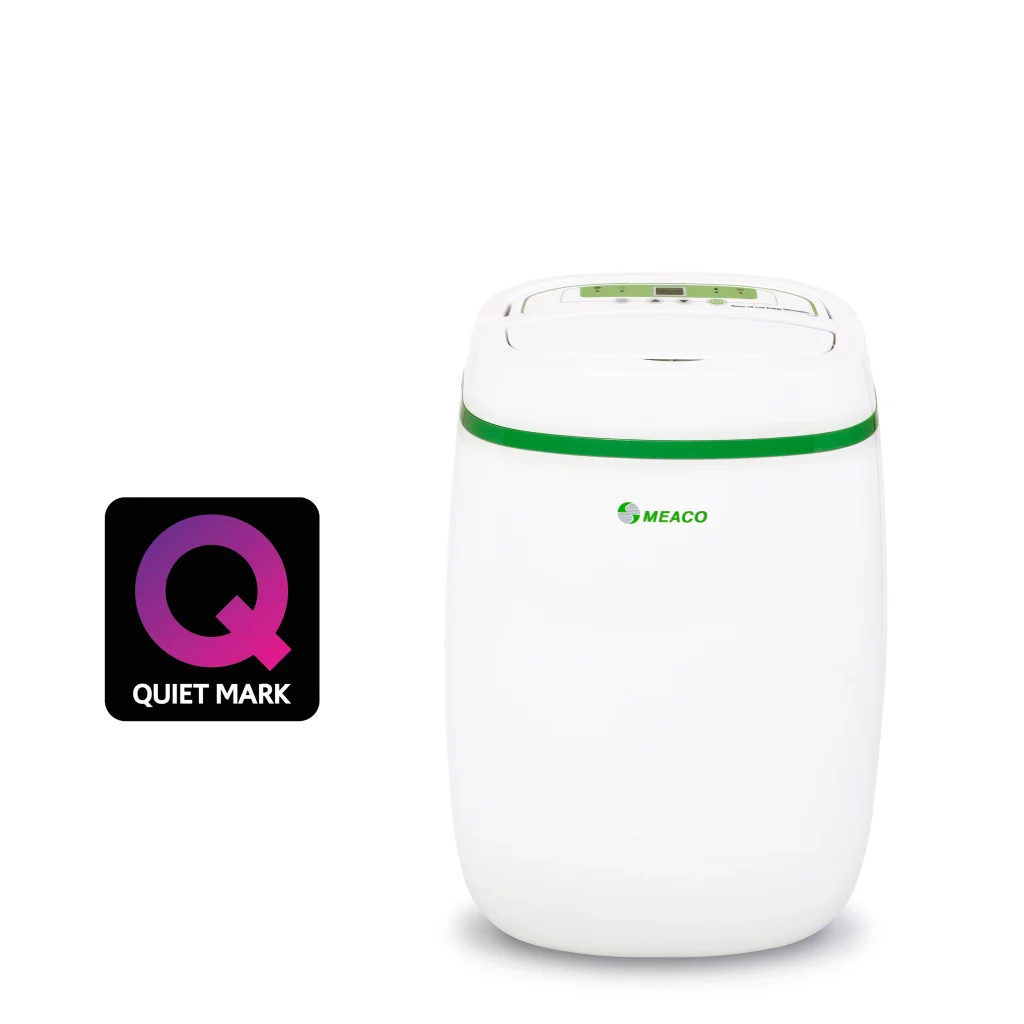
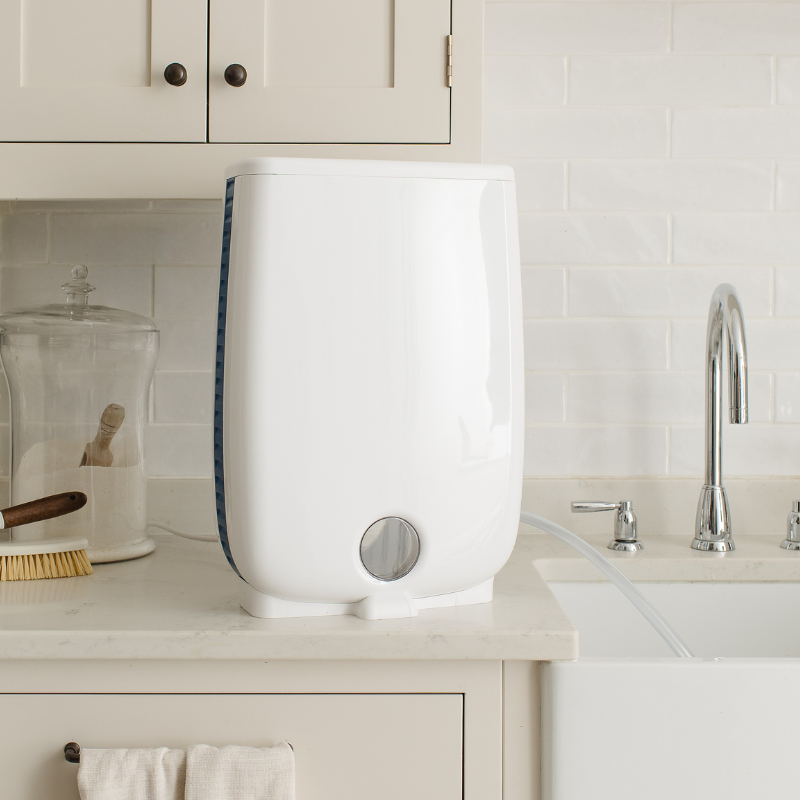


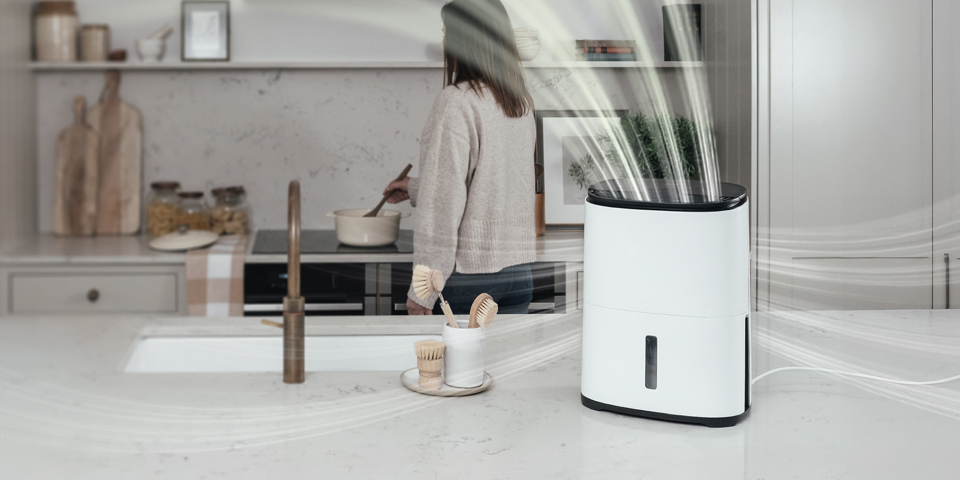
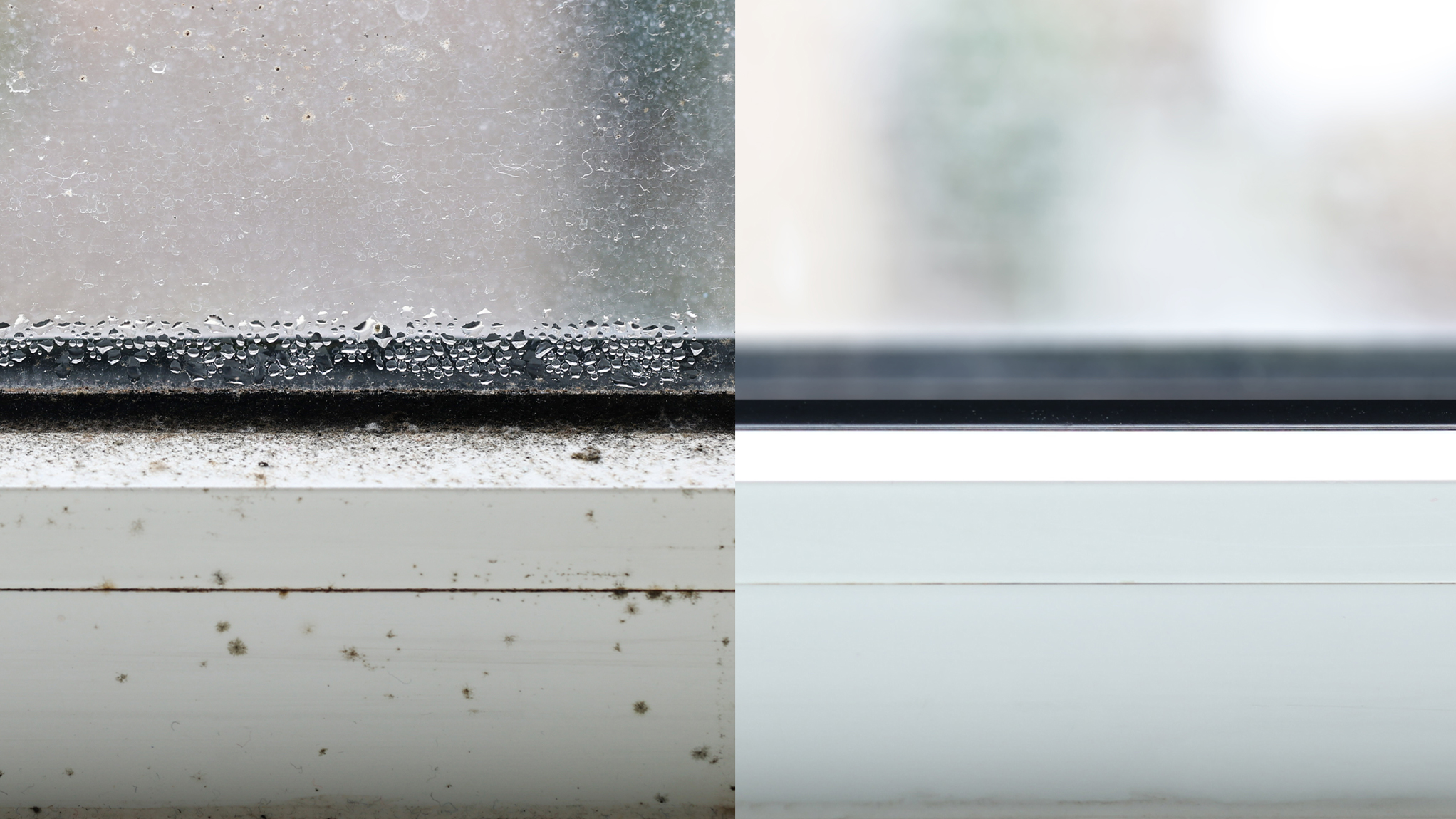


215 responses
Hi,
What’s the ideal percentage to run a meaco Arete dehumidifier during the winter months – 2 bedroom ground floor flat.
I am running the Meaco Arete at 50% and still getting a lot of condensation on the windows and I have double glazing. Am I doing anything wrong?
I open my windows every day to let in fresh air.
S Gabr,
Thanks for your message. The best approach is to use the Smart Humidity setting, that is to set the target for 55% relative humidity, as outlined in the manual. This usually helps manage condensation effectively.
If you’re still seeing significant condensation despite using this setting, please give our team a call — they can advise based on your specific flat and conditions.
KR,
Omar@Meaco
I have just started to use my dehumidifier as the weather has turned – I have two questions is it best to run it 24/7 and let it do its thing and can I still open windows in the morning for 15 mins or so for air exchange even if it is running ??
Thank you for explaining that in detail. One more thing that can lead to persistent condensation on windows is an air pressure imbalance in the home, not always “too much humidity” or bad windows. It happens when your home pushes out more air than it lets in. The easiest way to do that is by cracking open a window on the opposite side of the house or adding a small vent so air can replace what’s being pulled out.
Kevin,
Thank you for your input. Whilst our focus is around dehumidifiers for our readers, we really appreciate hearing different perspectives on managing humidity and condensation.
KR,
Omar@Meaco